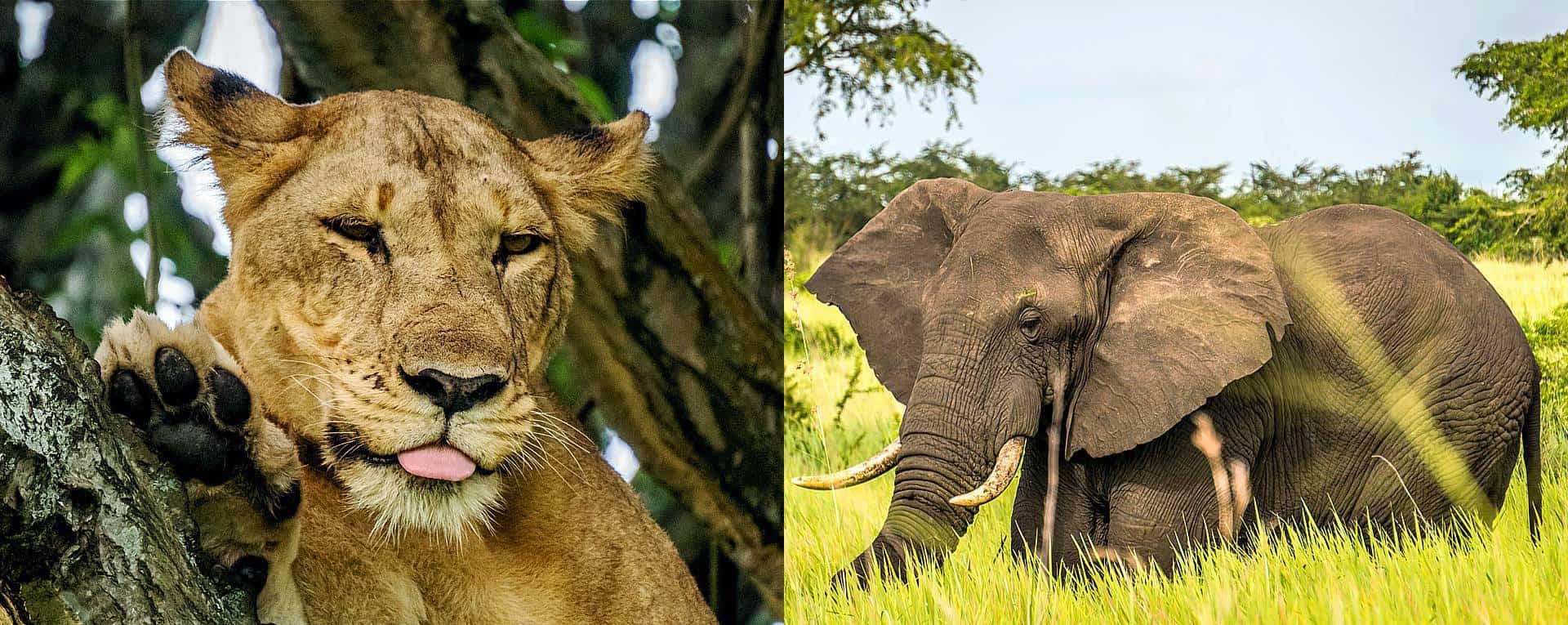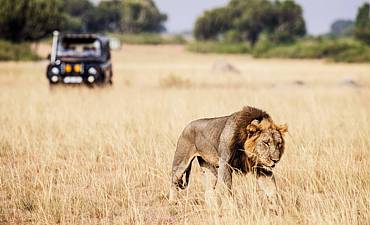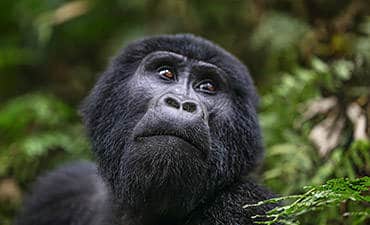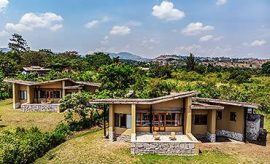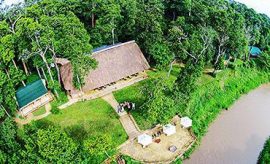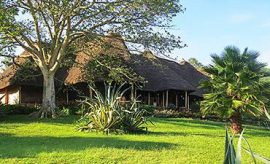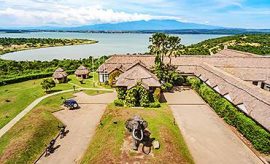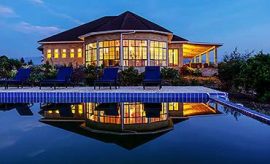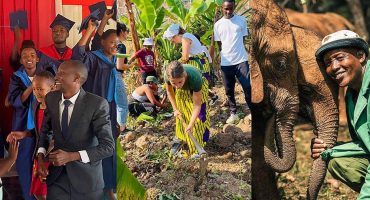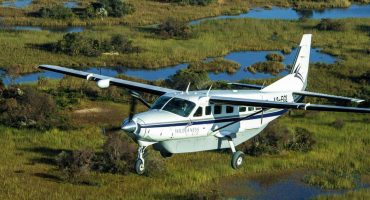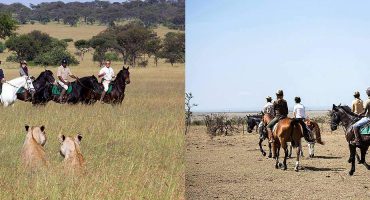SAFARI GUIDE ON QUEEN ELIZABETH NATIONAL PARK IN UGANDA
Queen Elizabeth Park Introduction - Location, Wildlife & History
Queen Elizabeth National Park may well be the quintessential wilderness reserve in Uganda since it has the distinction of boasting an incredible diversity of natural treasures across its 1978 square kilometers (764 square miles). On your safari vacation, you will be able to view a variety of lush habitats, including dense forests and bushlands, rich grassy savannah plains, rolling green hills, and loamy swamps bordered by low growth. On a clear day at distance, you will be able to see the famous world-renowned Mountains of the Moon — also known as the Rwenzori Mountains. These pristine landscapes of Queen Elizabeth support a fabulous variety of mammals —some 95 species — including large herds of elephant, buffalo, and antelope roaming the wilderness. Numerous pods of hippos inhabit the famed Kazinga Channel around the Mweya Peninsula, which connects Lakes George and Edward. Take a boat cruise on the channel and you may also spot crocodiles, which have reappeared after having been wiped out in the region by a volcanic eruption about 8,000 years ago.Among the predators you may spot on your game drive safari trips in Queen Elizabeth Park are the lion, leopard, hyena, and smaller cats like serval, genet, or civet. The park is also proud to host more than 600 varieties of birds, some of which are endemic to the region and rare in other parts of the world. Originally gazetted as a national park in 1952, the park opened under the name, Kazinga National Park. It received its current name after a visit by the Queen of England in 1954. This region forms part of the Great Rift Valley of Africa, and saw violent volcanic activity in its past. Reminders of the eruptions remain, and visitors will see various craters that now fill with water during certain seasons. The Katwe explosion craters mark the highest point of Queen Elizabeth National Park, sitting at 1350 meters above sea level the lowest point is at 910 meters at Lake Edward.
The park’s southern Ishasha sector is a much-visited travel destination with its close proximity to Bwindi, thanks to a wondrous sight: magnificent lions that have learned to climb fig trees. They can often be seen sprawled on the branches, napping in the midday sun. On the northeast, the Kasenyi Plains offers the classic African savannah plains with its varied predator-prey interactions. Yet another favorite tourist attraction for primate lovers is the Kyambura Gorge, which is famous not only for its rich variety of flora, but also for the family of chimpanzees that live here. The forest gorge also supports other primates, bringing the total up to 10 species. Queen Elizabeth Park (best time to visit) straddles the equator, and bush holidaying visitors in Uganda enjoy standing for photos on this imaginary line encircling the earth.
Key Takeaways
- Reserve covering an area of 1978 square kilometers with an unbelievably gorgeous diversity of landscapes
- Abounds with 95 mammals and over 600 species of birds
- Watered by the Kazinga Channel that connects Lake George and Lake Edward
- Ishasha region is famous for fig tree-climbing lions. Kyambura Gorge known for its 10 species of primates including chimpanzees
- Forms a part of the Albertine’s Great Rift Valley of Africa
Watch Video On Queen Elizabeth Safari Experiences
Travel Guide Content - Start Here
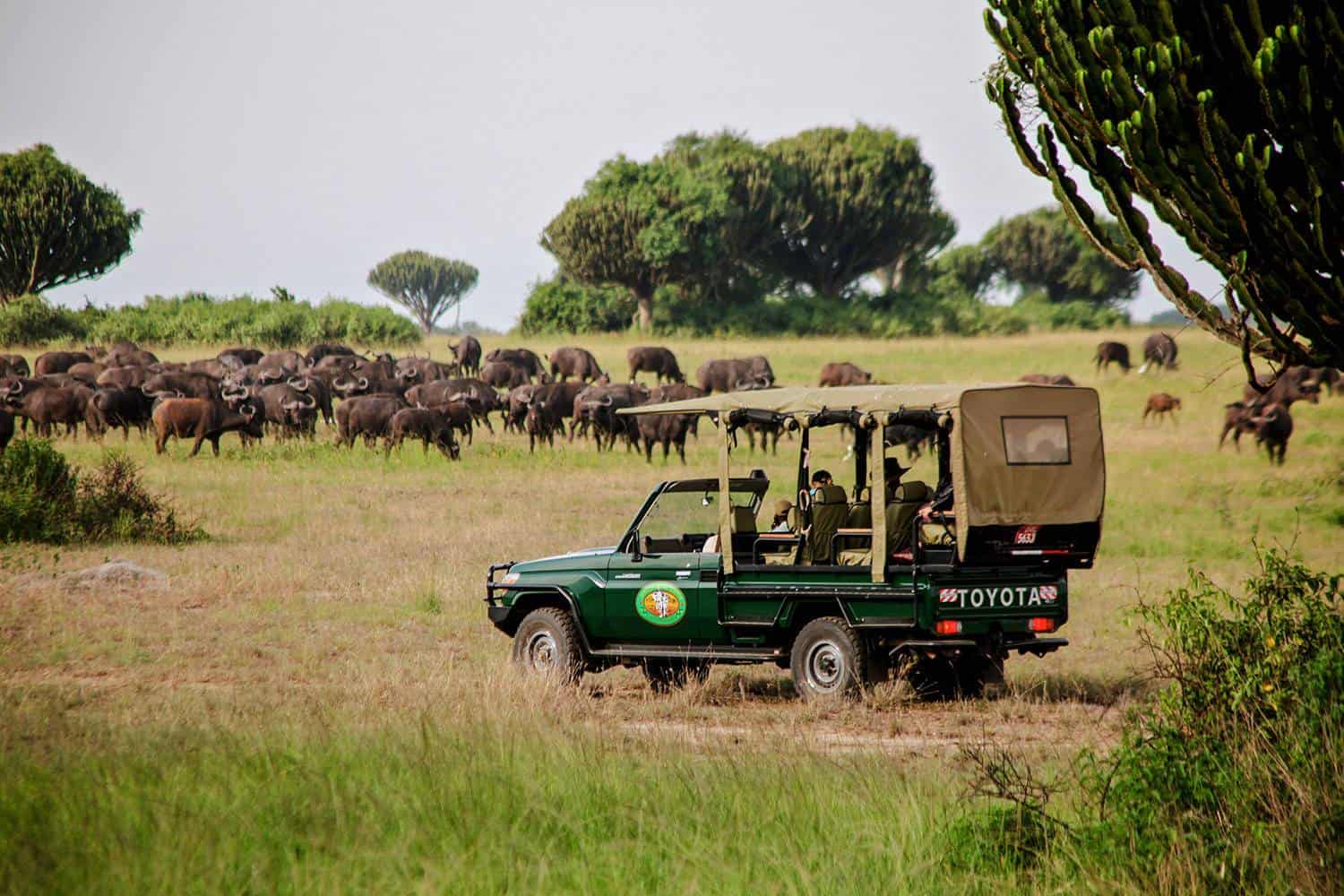 |
1. What Are The Wildlife Experiences In Queen Elizabeth National Park?
Key Takeaways
- Massive herds of herbivores such as 2,500 elephants, over 10,000 Cape buffaloes, 5,000 hippos, and various others including the elusive sitatunga antelope
- 10 species of primates including habituated chimpanzees thriving in the Kyambura Gorge, Kalinzu and Maramagambo Forests
- 600 varieties of birds mainly found around the Kazinga Channel, Mweya Peninsula, Lake George, Lake Edward, and crater lakes
- Safari game drives and birdwatching excursions to spot the fantastic array of wildlife
- A wide diversity of predators and big and small cats with a special focus on the tree-climbing lions
Big Cats & Other Predators Of Queen Elizabeth Park
You’re likely to spot some of the big and small cats that inhabit Queen Elizabeth Park on safari tours. Your guide will help you find lions, shy leopards, civets, genets, and serval cats. Hyenas and side-striped jackals are also present here. You’ll certainly notice that the male lions in this park sport a distinctive black mane, while the lionesses display incredible tree-climbing skills that allow them to sprawl out on the limbs of fig trees, napping or waiting for Ugandan kob to wander by.Grazers & Herbivores Of Queen Elizabeth Park
Queen Elizabeth Park boasts massive herds of grazers and ungulates, including 2,500 elephants and more than 10,000 buffalo. The lakes and Kazinga Channel host more than 5,000 hippos, while the grasslands and forests abound with Ugandan kob, warthogs, waterbuck, bushbuck, topi, and the rare sitatunga antelope, among others.Primate Species Of Queen Elizabeth Park
Safari adventurers who love primates will be thrilled to find up to 10 species on their travels through various sectors of the Queen Elizabeth Park, including a family of habituated chimpanzees found in the Kyambura Gorge and Kalinzu Forest. If you hike along the woodland pathways of the Maramagambo Forest, you may encounter black and white colobus monkeys, red-tailed monkeys, olive baboons, vervet monkeys, L’Hoest’s monkeys, blue monkeys, and various others. Chimpanzees are also present in Maramagambo. If you are lucky enough, you may also spot bush babies and pottos on your early evening forest walks.Beautiful Birds Of Queen Elizabeth Park
Queen Elizabeth National Park hosts more than 600 species of birds, including aquatic types that inhabit the Kazinga Channel, Mweya Peninsula, Lake George, Lake Edward, crater lakes, and other forested and wetland areas. Should you explore the channel and lakes by boat, you might be able to spot species like the pink and white-backed pelican, yellow-backed weaver, pied kingfisher, grey-headed kingfisher, African fish eagle, African jacana, white-faced whistling, squacco heron, spur-winged plover, the elusive shoebill stork, open-billed stork, knob-billed duck, greater and lesser flamingo, black crake, long-tailed cormorant, papyrus canary, wattled plover, papyrus gonolek, and water thick-knee.Opt for a nature walking excursion in the forests of Queen Elizabeth Park and you will be treated to sightings of the martial eagle, African broadbill, Verreaux’s eagle owl, white-tailed lark, African skimmer, black bee-eater, bar-tailed godwit, Chapin’s flycatcher, white-winged warbler, corncrake, black-rumped buttonquail, and various others. The wetlands of the reserve have their own variety of attractions for ornithologists. Spend long birdwatching vacation hours photographing Ugandan specimens like the swamp flycatcher, thin-tailed nightjars, Collard Pranticles, white-winged terns, and malachite.
When hiking through the Kyambura Gorge on a chimpanzee tracking safari trip, keep a sharp lookout for birds like the grey woodpecker, hairy-breasted barbet, purple-headed starling, black & African emerald cuckoo, speckled tinkerbird, green Hylia, white-spotted flufftail, and broad-tailed warbler.
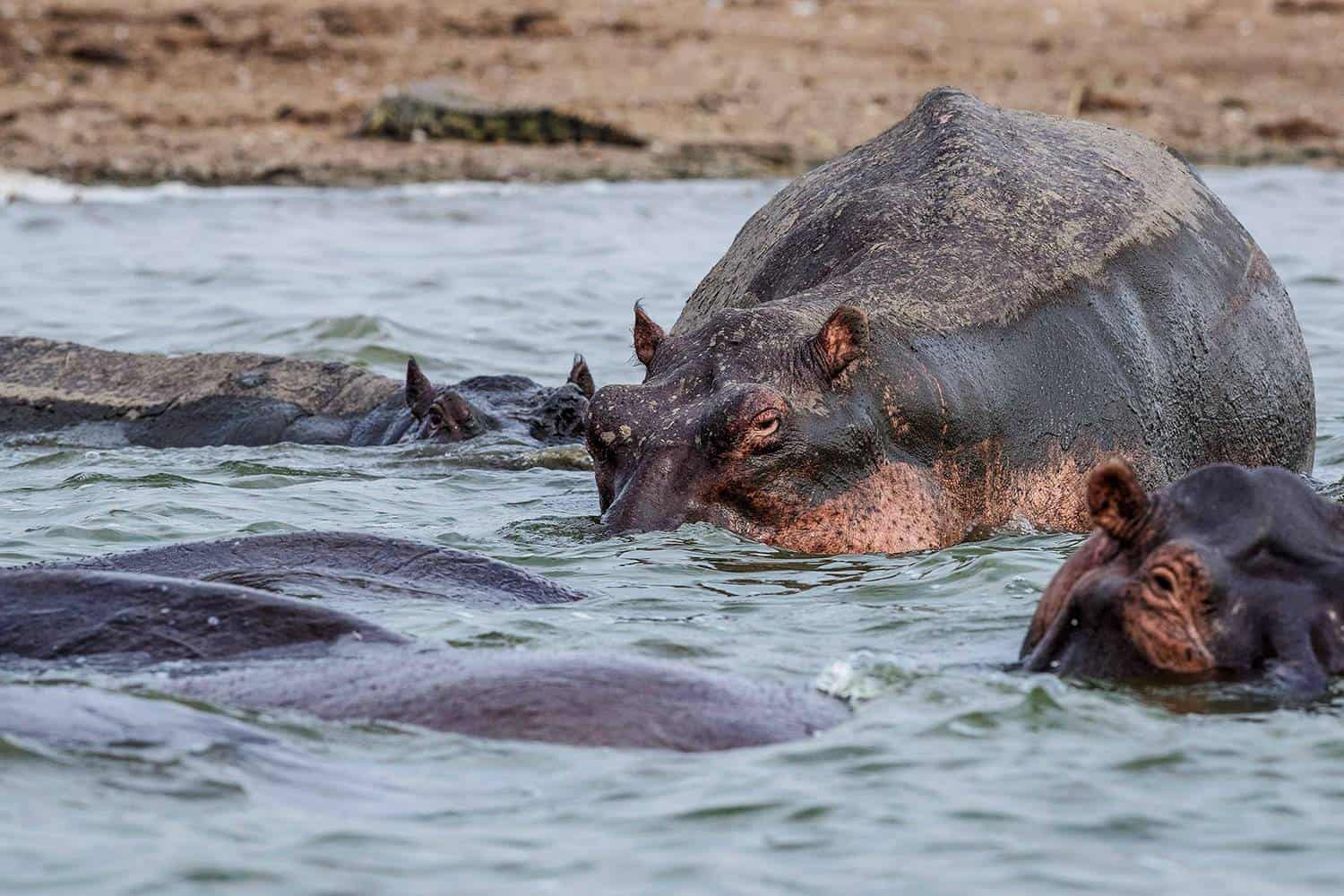 |
What Are The Areas Of Interest In Queen Elizabeth National Park?
2. Lion-viewing In The Ishasha Sector
Key Takeaways
- Located in the remote southern regions of the reserve
- Excursion best combined with a gorilla trekking tour to Bwindi Impenetrable National Park
- Famous for sightings of lionesses napping on the branches of fig trees and various grazing species
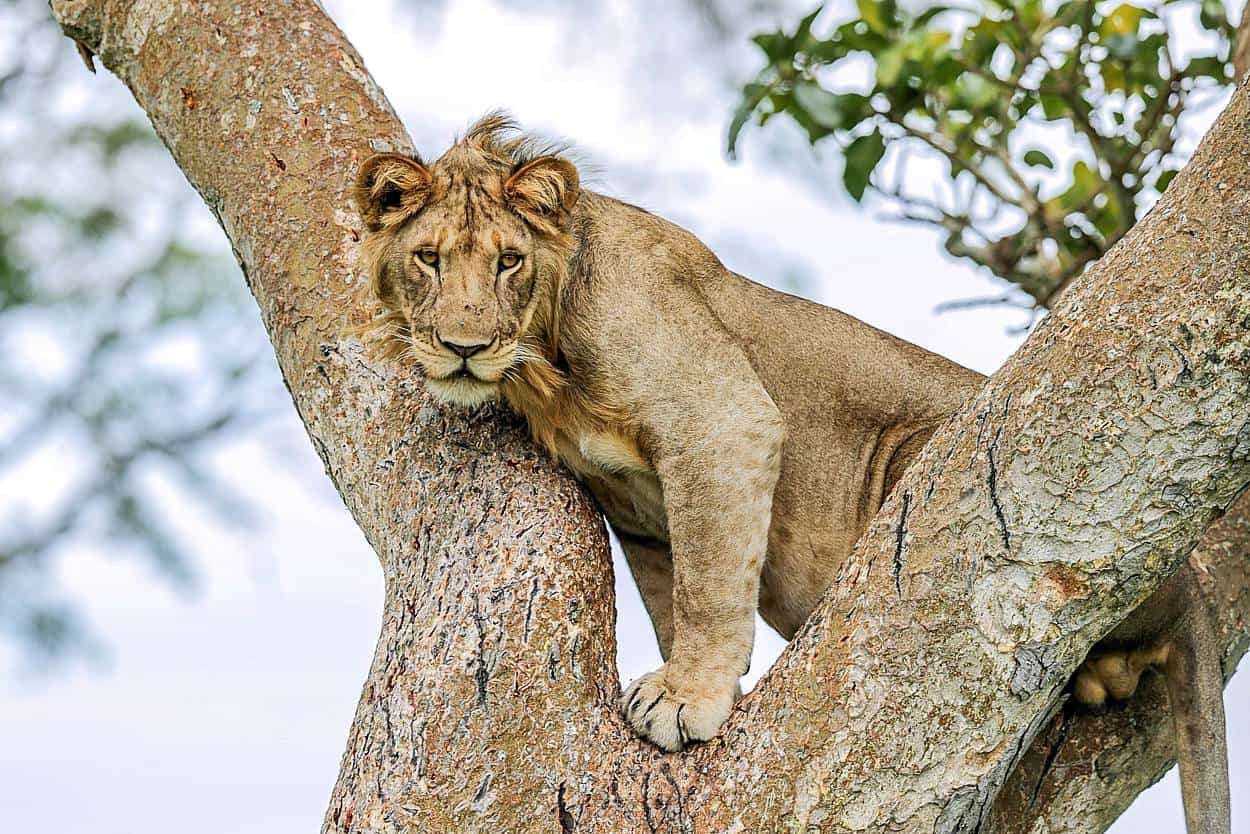 |
3. Kasenyi Savannah Plains
Key Takeaways
- Ideal location for photographing massive herds of gazers in the green and golden savannah
- Ideal birding destination which is home to various grassland species
- Sightings and interactions of stealthy predators looking for prey meals
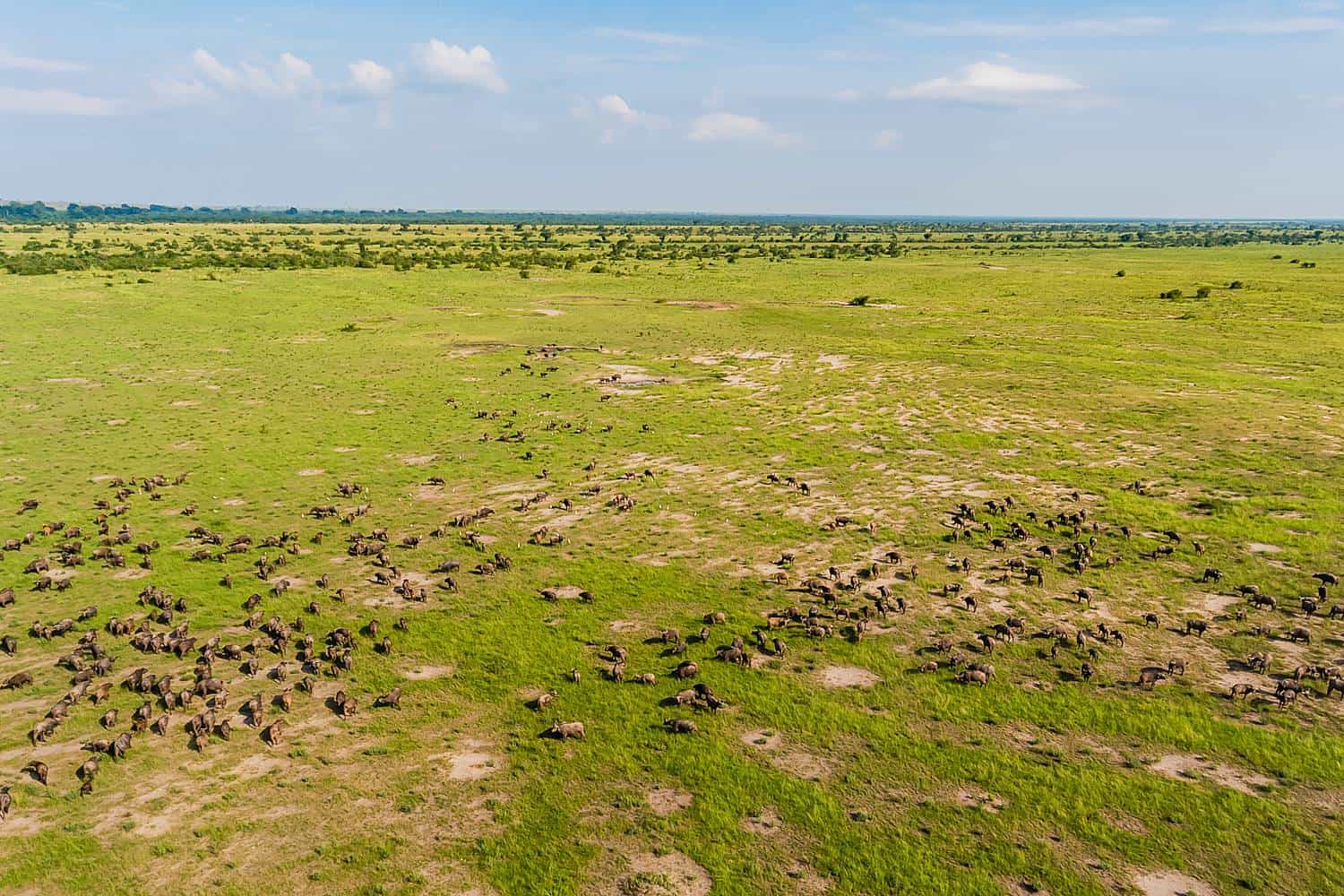 |
4. Scenic Views Of Lake Edward From Mweya Peninsula
Key Takeaways
- Picturesque views of the Kazinga Channel just before it enters Lake Edward at the Mweya Peninsula
- The starting point for boating safaris is on the edge of Lake Edward and game drives in the park
- Elevated location of Mweya Peninsula providing ample opportunities for photography
- Fabulous scenic landscapes including Kasenyi grasslands, winding channel, and the distant Rwenzori Mountains
- Sightings of animals in the undergrowth and in the waters of the channel
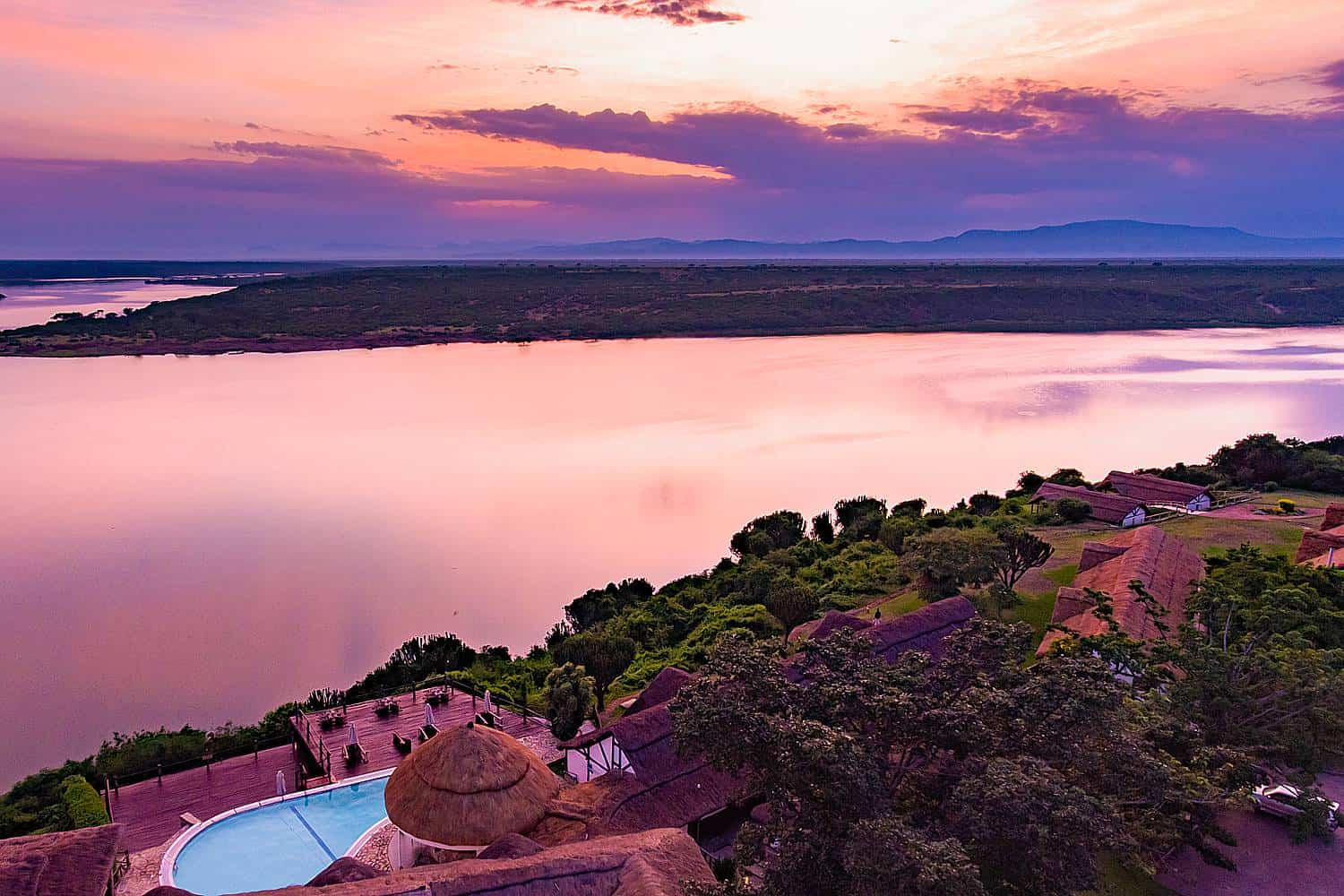 |
5. Boat Cruising On The Kazinga Channel
Key Takeaways
- Natural waterway connecting Lake George on the east with Lake Edward on the west
- Shallow Lake George spread over an area of 250 square kilometers
- Lake George receiving waters from the Rwenzori Mountains and draining into the Kazinga Channel
- Lake Edward known as one of the largest freshwater lakes in Africa covering an area of 2,000 square kilometers
- Boat trips on the lake to view a stunning diversity of terrestrial and avian wildlife coming to the water’s edge to drink
If you take a boat trip on the channel, you will get a sense of the stunning diversity of the birdlife and land animals of Queen Elizabeth Park. Look out for lofty wildlife like the elephant, hippo, buffalo, and perhaps even a leopard lurking among the papyrus reeds. You may also see monitor lizards, crocodiles, and frogs basking on the sandy banks or near papyrus reeds, as well as aquatic birds of Africa like fish eagles, weaver birds, marabou storks, and various others.
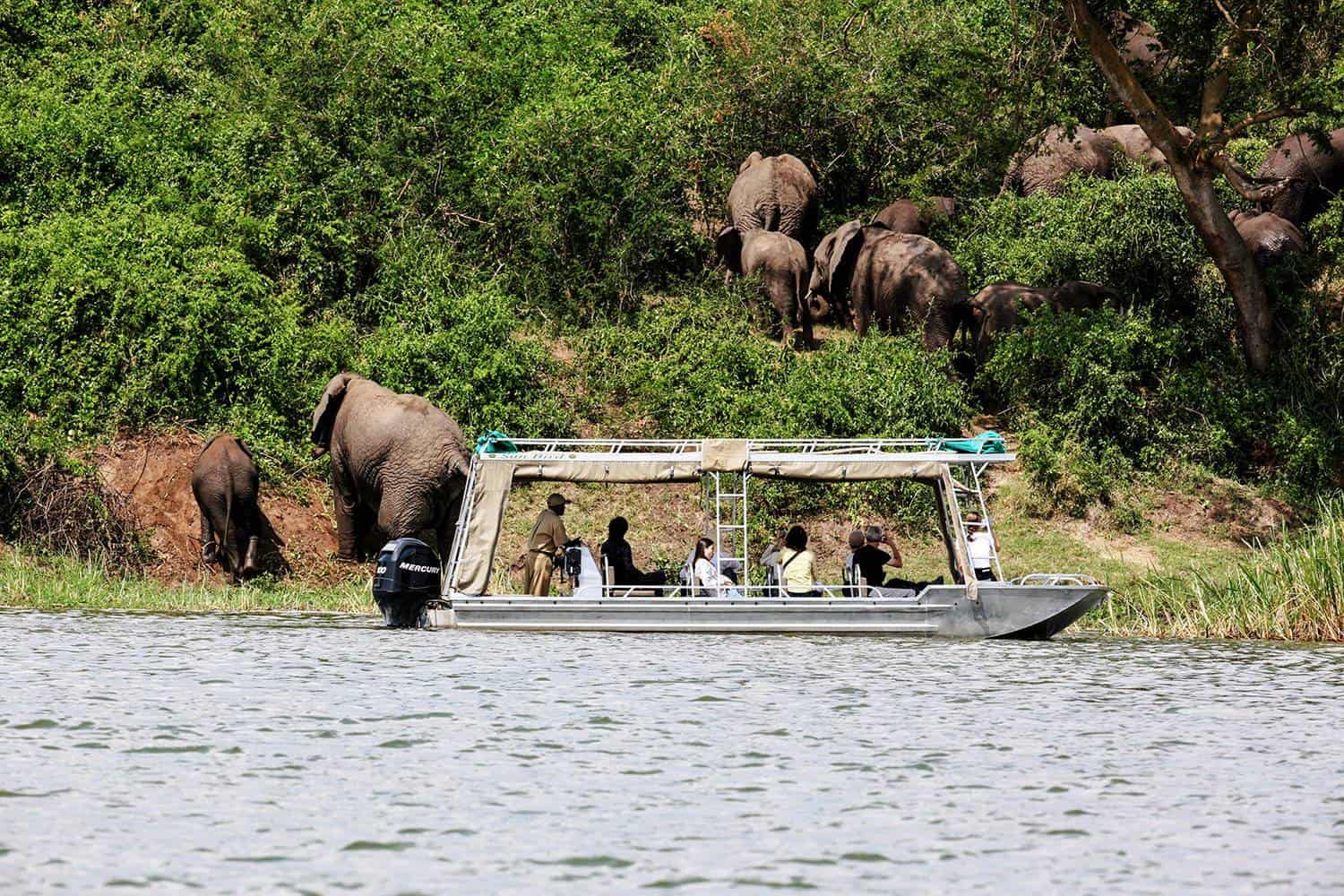 |
6. Chimpanzee Trekking In The Kyambura Gorge
Key Takeaways
- Kyambura Gorge, also called Chambura carved out by the Kyambura River
- Lying at a depth of 100 meters below the Kichwamba inclines extending to 1 kilometer at its widest point
- Tracking down chimpanzees under the supervision of guides assigned by the Uganda Wildlife Authority. Option of combining it with Kalinzu Forest chimpanzee trekking excursion
- Opportunity to spend time with a family of 15 to 20 habituated chimpanzees that live here giving it the name, “Valley of the Apes”. Kalinzu Forest has a community of 40 chimpanzees
- Sightings of various other species of primates and varieties of bird
Your trip can include trekking in the company of trained Uganda Wildlife Authority guides, who will help you spot the family of 15 to 20 habituated chimpanzees that live here. Their presence has earned the valley the nickname “Valley of Apes,” but it’s also known for the presence of other primates of Africa such as the black and white colobus monkey, vervet monkey, olive baboon, and red-tailed monkey. After a picnic at the entrance of the gorge, you will enter a lush, green world of tropical forests with a thick canopy that all but shuts out the sunlight. Having previously encountered the grassy plains of Queen Elizabeth Park, your travels in the Kyambura Gorge will be a fascinating introduction to a totally different aspect of the reserve. We also recommend tracking down the chimpanzee community at Kalinzu Forest (30 minutes away), where 40 habituated individuals exist.
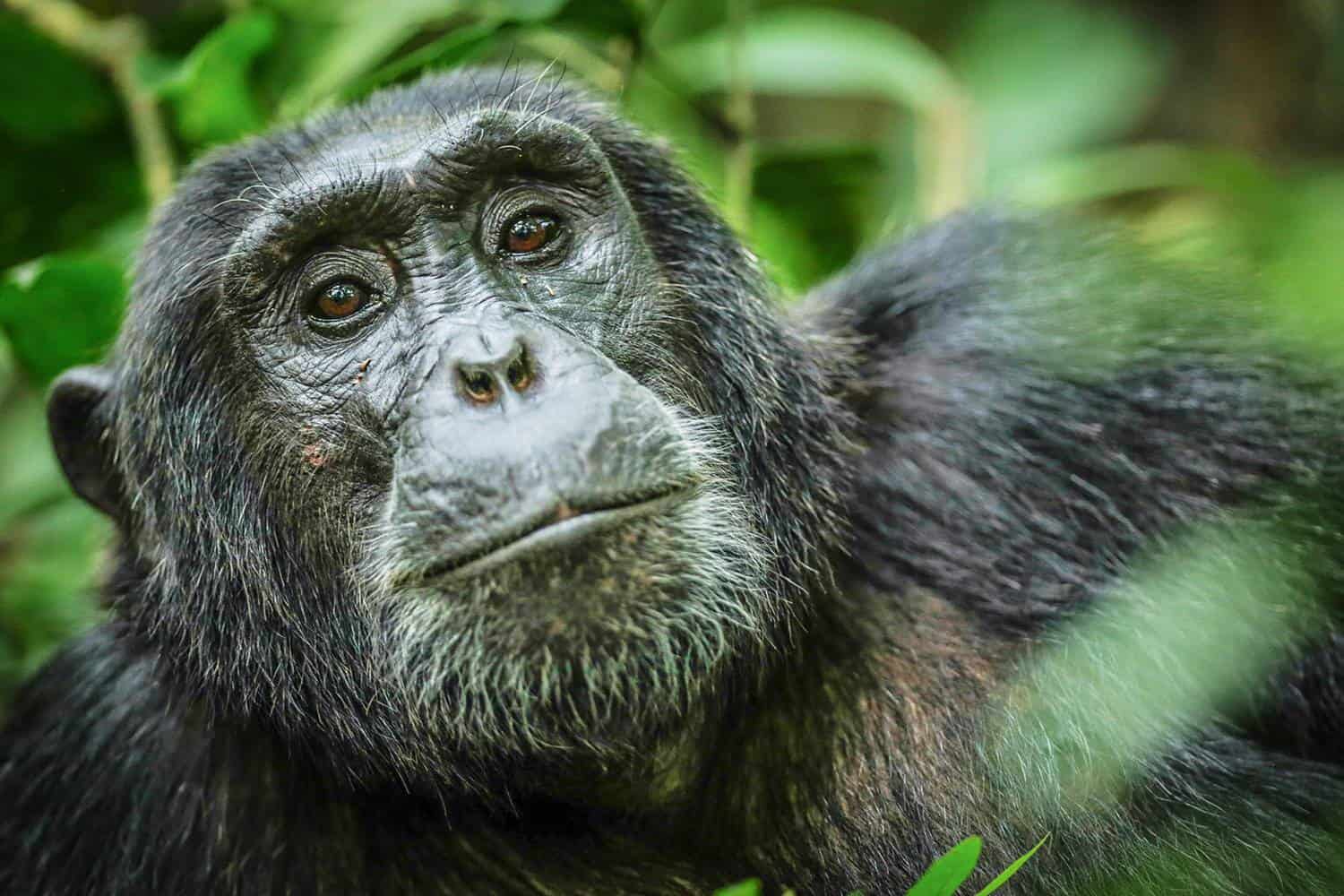 |
7. The Shoebill Swamp At Lake George
Key Takeaways
- Located near the park covering an area of 250 square kilometers. Shoebills are typically found north of the lake
- Shallow in nature with an average depth of 2.4 meters and standing on the western section of East Africa’s Great Rift Valley
- Fed by the streams from the Rwenzori Mountains that passes through farmlands on the northeast and drains into the Kazinga Channel which carries the waters to Lake Edward
- Abounds with various species of fish with a Ramsar birding site bordering the lake on the north
- Tourist spots on the main islands in the lake, Iranqara, Kankurang, and Akika
The lush papyrus wetlands that form part of the Ramsar swamps border the lake on the north and are home to the rare sitatunga antelope and shoebill stork, found at the dense Shoebill Swamp, which you might be able to spot on your Queen Elizabeth Park trip. An interesting addition to your safari vacation is visiting the major islands in the lake, including Iranqara, Kankurang, and Akika. Lake George attracts various species of mammals that come to its shores to drink. The lake is also home to numerous types of fish, including haplochromis nigripinnis, tilapia nilotica, thermocyclops hyalinus, and cyclopoid copepod.
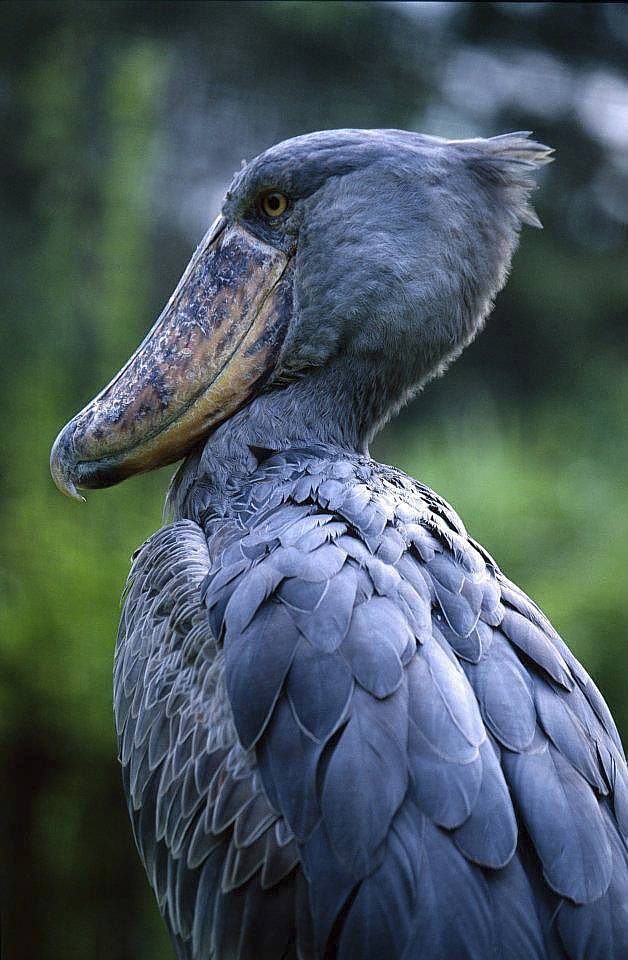 |
8. Volcanic Explosion Craters Around Queen Elizabeth Park
Key Takeaways
- 72 circular craters which are remnants of ancient volcanic activity in the Albertine Rift Valley of Africa
- Volcanoes have been extinct for centuries, but some still emit sulfurous gases while others form seasonal lakes during the wet seasons
- Game drives following a 27-kilometer trail running from Kabatoro Gate and the Queen’s Pavilion
- Traveling to reach the Katwe Explosion Craters and Bunyaruguru Crater Field
- Excursion ending at the Ndali-Kasenda Crater Field near Kibale National Park
On your game drives, you can follow a 27-kilometer trail that spans the area between the Kabatoro Gate and the Queen’s Pavilion, in the shadow of the Rwenzori Mountains. Revel in the striking panoramas you’ll see here, encompassing craters, lakes, the slopes of the Rift Valley, and the Kazinga Channel. Travel to the Katwe Explosion Craters inside Queen Elizabeth National Park before going on to explore the Bunyaruguru Crater Field, which sits on the Kichwamba slopes. If you are going to Kibale National Park, do stop over at the Ndali-Kasenda Crater Field.
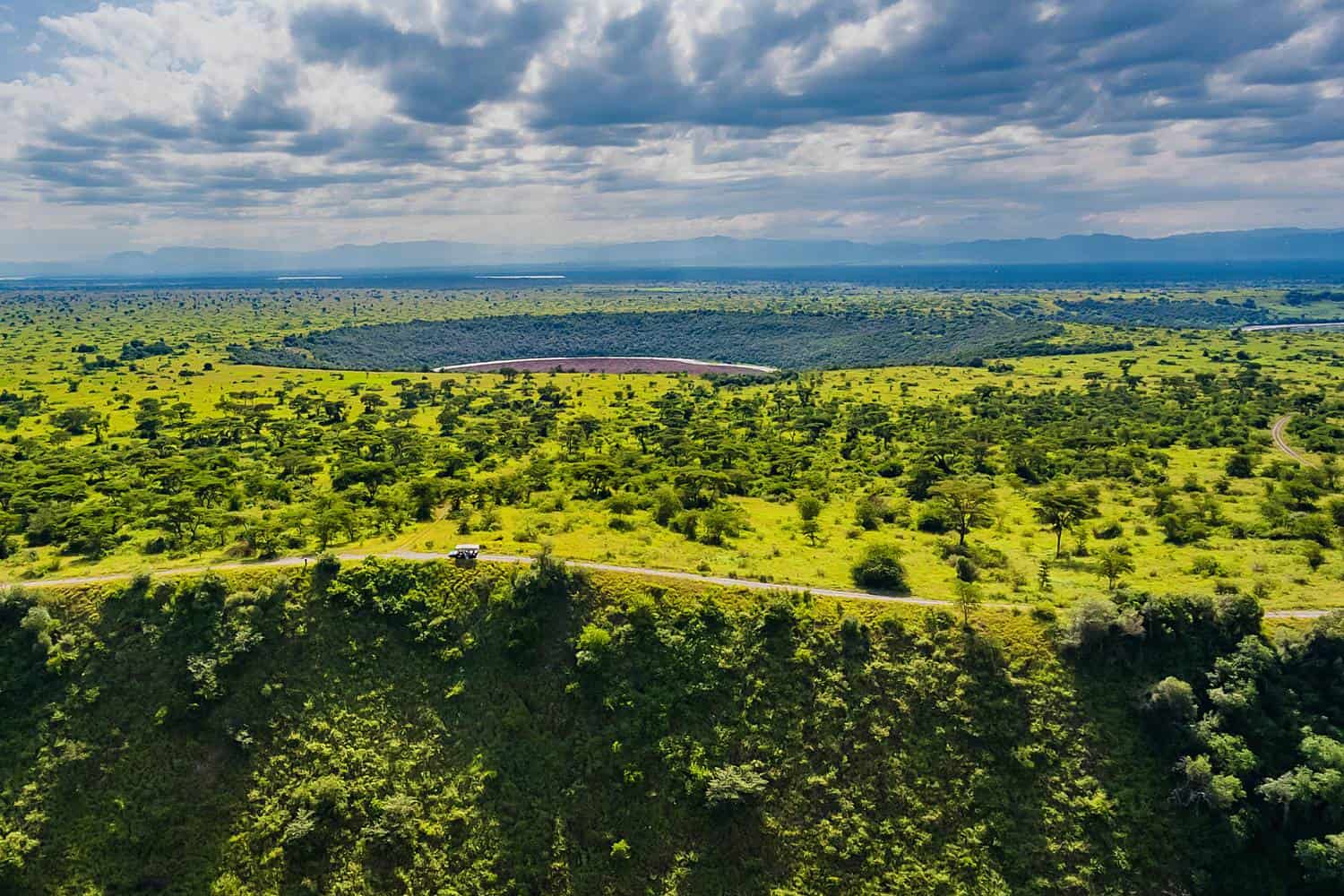 |
9. Katwe Salt Lake
Key Takeaways
- Thriving salt mining industry dating back to the 16th century
- A significant vantage point for the Katwe-Kabatoro community
- Sightings of migratory flamingos in the months from August to November at Lake Munyanyange
10. Primates & Bird Watching In Maramagambo Forest
Key Takeaways
- Known as a famous birdwatcher’s haven showcasing an amazing diversity, also has primates including chimpanzees
- Cormorant House, a massive tree that is coated by the guano of a huge flock of birds that roost on it
- The unique Bat Cave with a viewing deck for tourists
Select Our Highly Recommended & Unique Designed Uganda Safaris & Gorilla Treks That You Want To Tour Visit & Experience
What Safari Attractions & Tour Activities To Experience During Your Queen Elizabeth Visit?
Key Takeaways
- Well-known across the world for its incredible natural beauty with diverse landscapes and a stunning variety of wildlife and flora. Sprawled across Uganda’s western section of the Albertine Rift Valley
- Kasenyi plains teems with herbivores that thrive on the grasslands amidst stealthy predators
- Forest treks in the Kyambura Gorge which is home to 10 species of primates including a habituated family of chimpanzees
- Boat cruises on the Kazinga Channel to view diverse terrestrial and aquatic wildlife including birdlife
- Sightings of majestic lions napping in the fig trees in the Ishasha Sector
Today, the crater interiors often form seasonal lakes, which you can tour on game drives in Queen Elizabeth Park. The vast savannah grasslands of the Kasenyi plains stretch as far as the eye can see and provide grazing grounds for the park’s herbivores, while predators lurk in the tall grasses, looking to snag a careless Ugandan kob. The plains are dotted with acacia and euphorbia trees, while the lush forests of Maramagambo, Kalinzu and Kyambura Gorge form canopies so thick that the sunlight can barely filter down to the floor.
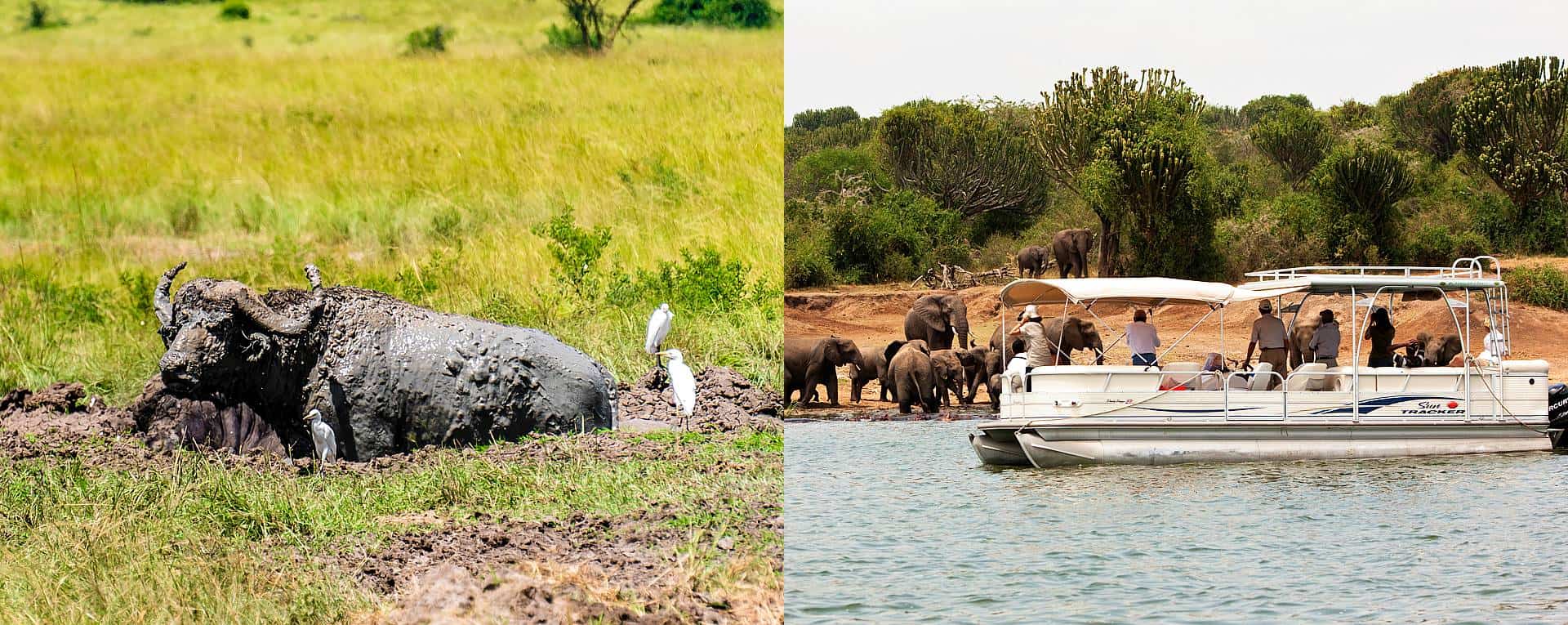 |
Queen Elizabeth National Park is famous for impressive herds of elephant, buffalo, and other herbivores. If you take a launch ride on the Kazinga Channel, you may have the opportunity to view some of them coming to drink along the shores. This picturesque channel is one of the highlights of the park and connects Lake George on the east with Lake Edward on the west. You will have many memorable safari holiday moments as you photograph hippos in the shallows with their jaws gaping, crocodiles basking in the sunshine, and buffaloes and elephants grazing on the banks.
Travel to the Ishasha sector in Queen Elizabeth Park and you may spot majestic lions with an incredible skill: the ability to climb trees. Have your camera ready so you can photograph them napping in the fig trees or lying in wait for grazing antelope - the endemic kob. In all, the reserve is known for close to 95 species of mammals and more than 600 varieties of birdlife. With the assistance of the expert AfricanMecca guide who will be accompanying you on your safari drives, you’ll hopefully get lucky and see a good many of them. Queen Elizabeth Park now has a network of about 200 kilometers of tracks that make wildlife viewing easy. Before you leave, do take the time to interact with the local communities in the outskirts villages for a cultural tour of Uganda.
Watch Video On Queen Elizabeth Safari Experiences
Our Top 9 Safari Activities In Queen Elizabeth - Things You Can Do & See
Activities Content - Start Here
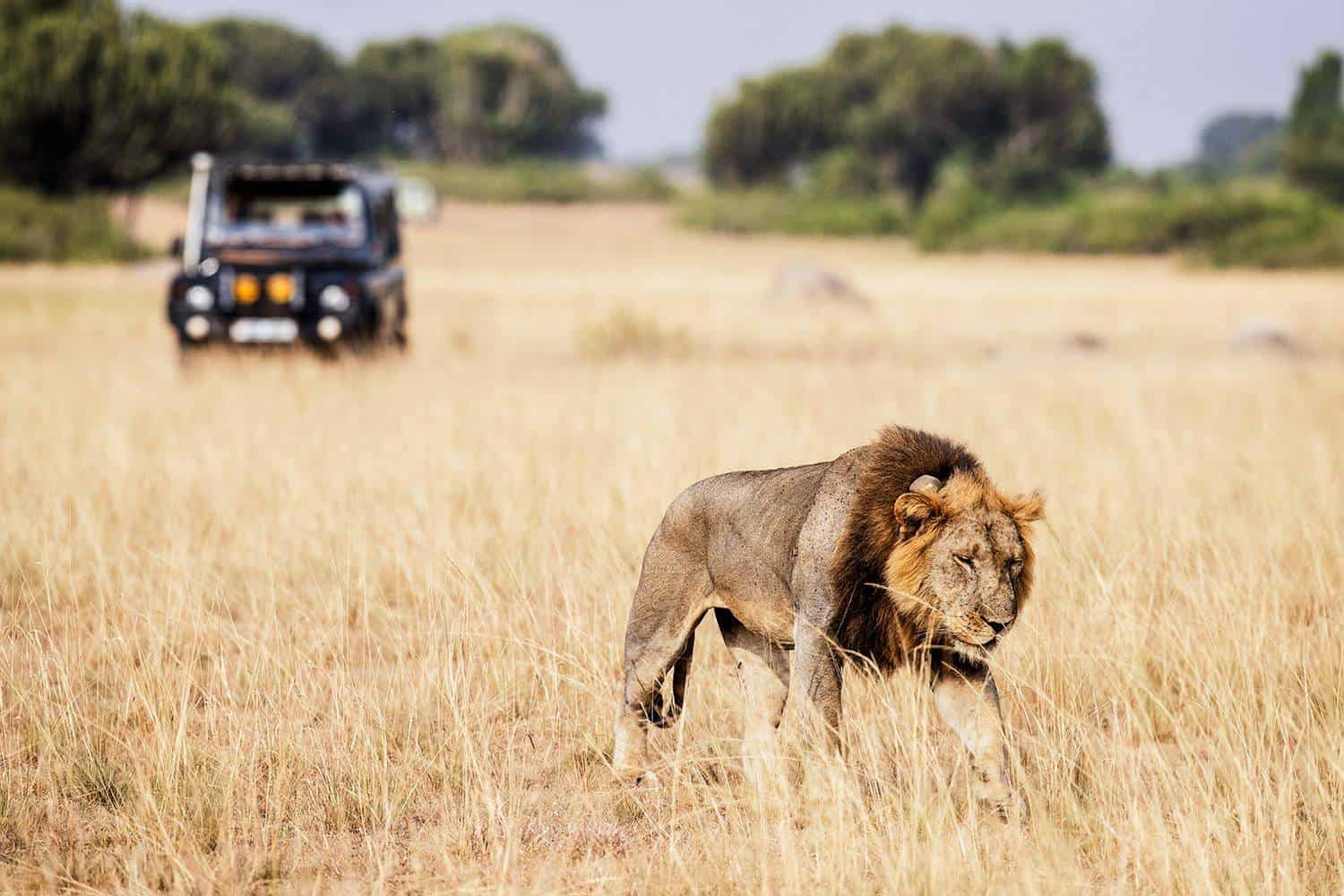 |
1. Game Drives To View The Diverse Wildlife Of Queen Elizabeth
Key Takeaways
- Game drives in special custom-built 4x4 safari vehicles made available by AfricanMecca
- Two drives, one in the morning at 6:30 a.m. and late afternoon at 4 p.m.
- Opportunity to explore 1,978 square kilometers of the stunning wilderness
The tour consultants at AfricanMecca Safaris offer special custom-built 4x4 safari vehicles for your excursions. Typically, game drives in Queen Elizabeth Park (best time to go) are undertaken in the early morning, beginning around 6:30 am, and around 4:00 pm in the afternoons. After tea and coffee, you can leave for your wildlife-viewing adventure. The north Kazinga and Kasenyi Plains are known for sightings of warthog, bushbuck, waterbuck, buffalo, giant forest hog, elephants, lion, and leopard. Explore the Ishasha Sector in the south to see the tree-climbing lions that are often seen napping in the fig trees. The southern sector of the reserve is largely untouched, and you are unlikely to see many other tourists here.
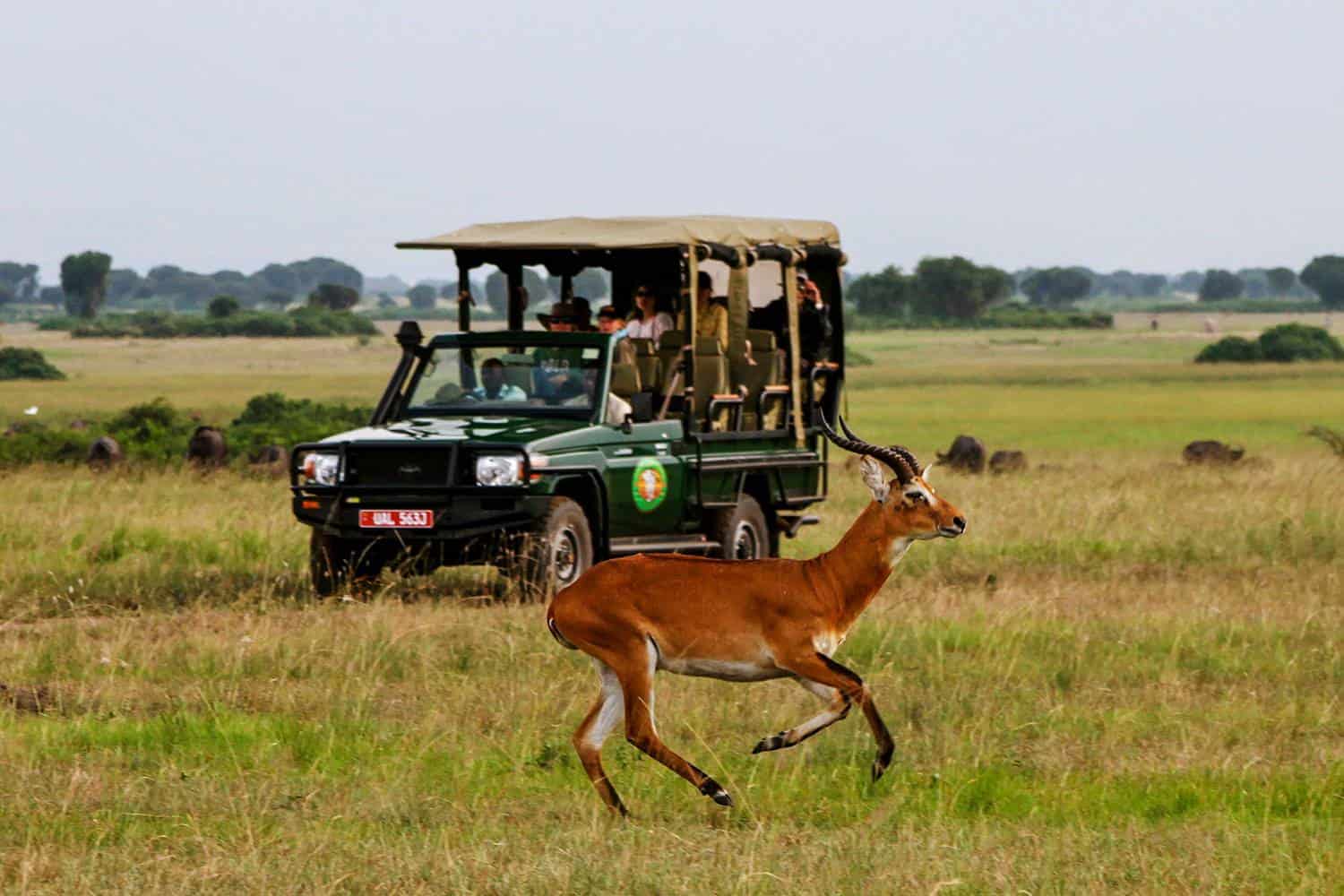 |
2. Boat Safaris On Kazinga Channel
Key Takeaways
- Kazinga Channel traversing a distance of 32 kilometers connecting Lake George on the east with lake Edward on the west
- Sightings of hippos and crocodiles on the banks of the channel along with various other species feeding and drinking
- The smaller boats have a seating space of 10 to 12 guests with canopies for shade from the sun, guests have the option of booking private boats also available
- Refreshments served on board during the ride
- Each excursion lasting two hours and starting at 3 p.m. and 4 p.m.
The smaller boats can comfortably seat 10 to 12 guests and have canopies for shade from the sun, along with safety equipment for your protection. You will also be treated to refreshments to enjoy while the guides offer in-depth information about the park denizens you come across. Your 2-hour excursion will begin at 3 p.m. or 4 p.m. at the Mweya jetty. You also have the option of booking a trip on a private boat, which leaves at 2 p.m. and 4 p.m. every afternoon.
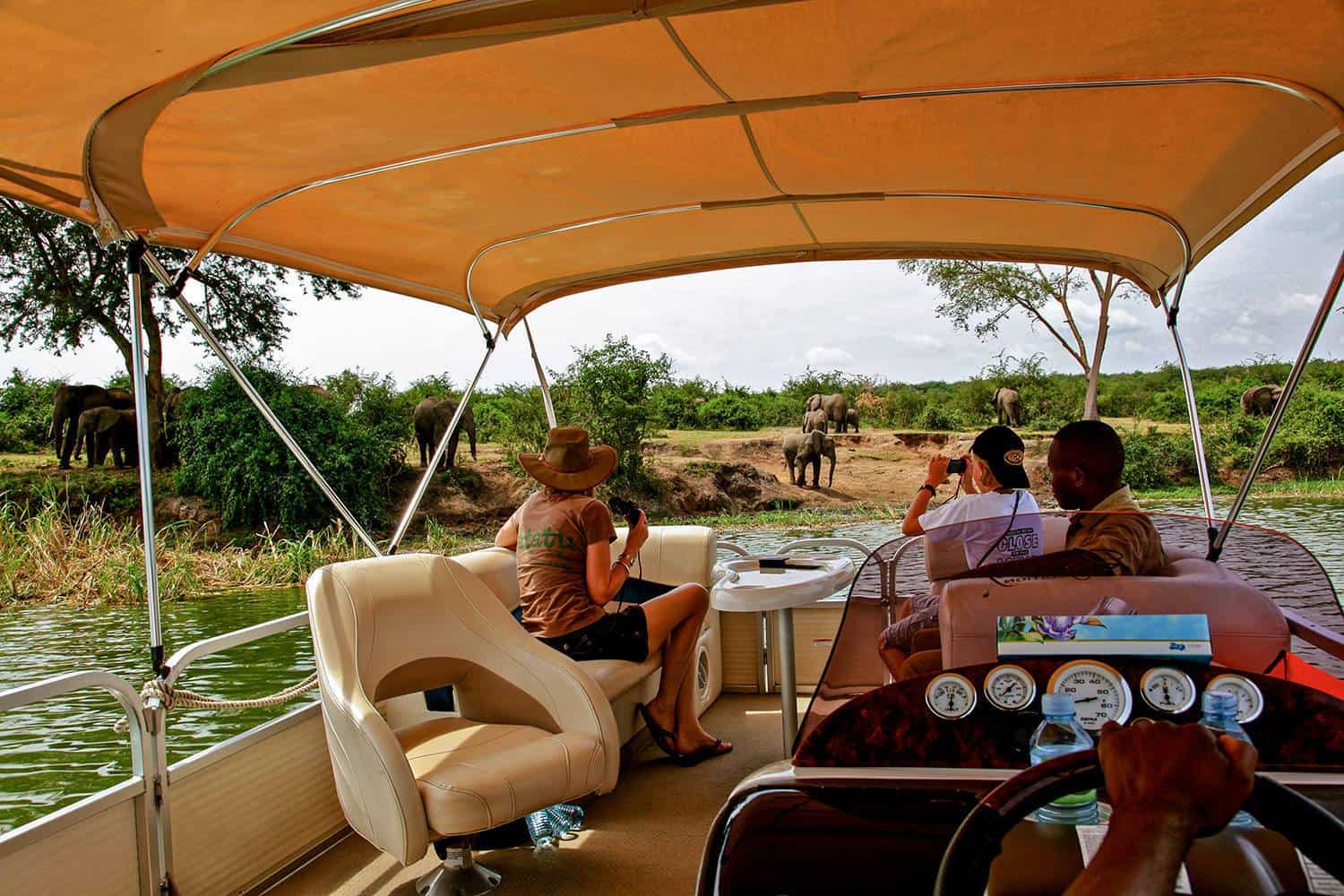 |
3. Birdwatching Safaris In Different Habitats Of Queen Elizabeth
Key Takeaways
- “Important Bird and Biodiversity Area” (IBA) declared by Birdlife International
- Queen Elizabeth Park hosts over 600 species of birds
- Diverse landscapes providing unique habitats that support them
Look for colorful species such as flamingos on the salt lakes, fish eagles, marabou storks, shoebill storks, weaver birds, great egrets, elusive forest fly-catchers, white-naped pigeons, cormorants, Rwenzori turacos, and owls. The prime locales for ornithology are the Katwe area, Katunguru Bridge, Lake Kikorongo, Ishasha sector, Mweya Peninsula, Maramagambo, Kalinzu and Kyambura Gorge, Kasenyi Plains, and the Kazinga Channel.
As your tour consultant at AfricanMecca Safaris will advise, the perfect season for bird watching excursions in the Queen Elizabeth Park is from end of May to September. The migratory birds arrive in November and leave by April. The peak rainy months of April and November bring abundance of food that leads to a lot of avian activity though trails can be slippery, and also roads and airstrips can be challenging to navigate. You may want to set aside 2 to 3 days dedicated specifically to the birds.
Below is a list of some of the birds of Queen Elizabeth National Park
|
|
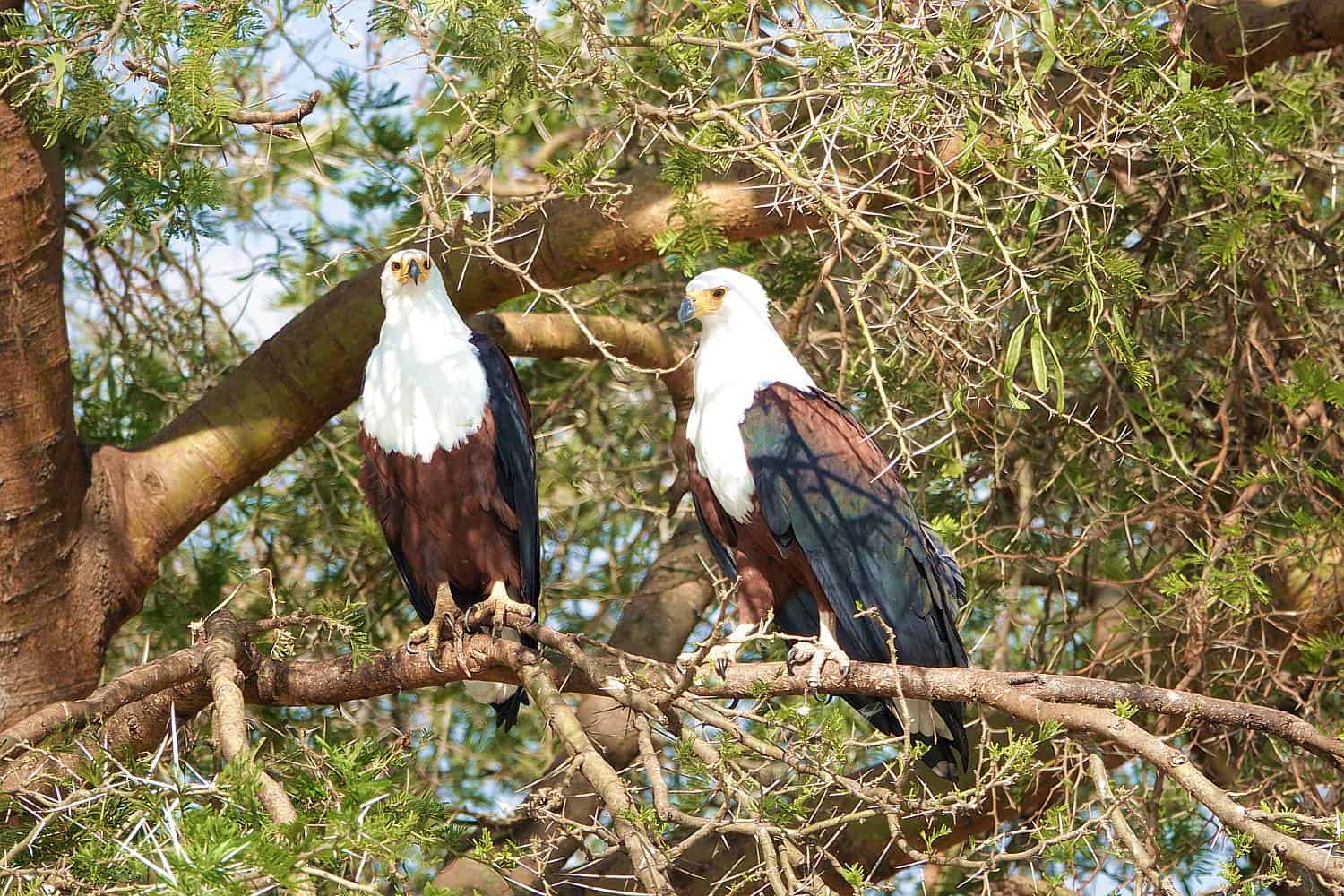 |
4. Chimpanzee Trekking Safaris In Kyambura Gorge
Key Takeaways
- Deep valley located on the east of the park, gorge cut into the landscape by the Kyambura River
- 10 different kinds of primate species
- Family of habituated chimpanzees along with a fabulous array of birdlife
- Trekking expeditions starting at 8 a.m. or 2 p.m.
- Each hike lasting for around 1 to 5 hours depending on the location of the chimpanzees on that particular day
To give you the best possible chance of spotting chimpanzees, your tour consultant at AfricanMecca Safaris may combine your excursion with a hike to Kalinzu Forest, which is located about a 30-minute drive from Kyambura Gorge. This forest is also known for the family of 40 chimpanzees that live here. A typical chimpanzee-tracking hike can last anywhere from 1 to 5 hours, depending on the location of the primates you are looking for. Treks generally begin at 8 a.m. or 2 p.m. The landscape of the gorge is breathtakingly beautiful, but can present a challenge because of the steep slopes and uneven trail. However, you’ll be rewarded on this trip with viewing and hearing the songs of various birds, like the African finfoot, various falcons, and blue-headed bee-eater, to name a few. We also recommend extending out to Kibale National Park for your chimpanzees safari trek.
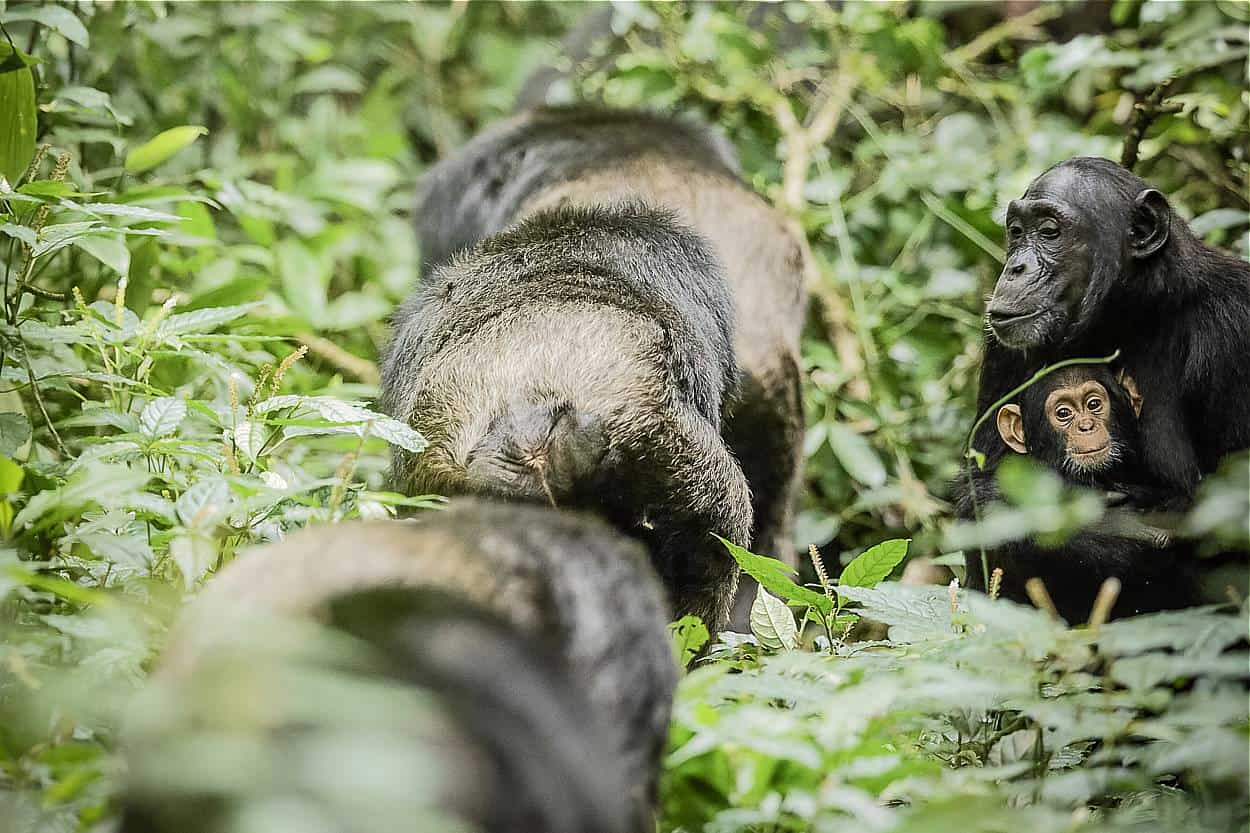 |
5. Katwe Explosion Crater Tour
Key Takeaways
- Katwe explosion craters, so called because of the force with which they exploded and spewed ash around an extensive radius
- Some craters transforming into scenic lakes during specific seasons while others have saltwater acting as magnets for large numbers of flamingos feeding on the blue-green algae
- Sightings of herds of elephants, and warthogs, and hippos in the shallows
- Main crater locations at Ndali-Kasenda Crater Field, Bunyaruguru Crater Field on the slopes of Kichwamba, and Katwe Explosion Craters
- Driving to the massive Kyemengo Crater and saltwater Lake Katwe having a depth of 3,265 feet
The craters are mainly clustered in three locations: Katwe Explosion Craters in Queen Elizabeth Park, the panoramic Ndali-Kasenda Crater Field, close to the Kibale National Park, and the striking Bunyaruguru Crater Field on the slopes of Kichwamba. While traveling in the park, you will have the opportunity to visit the massive Kyemengo Crater and Lake Katwe, which has a maximum depth of 3,265 feet and a highly saline water content.
As your tour guide will explain, the lakes have been the site of salt-extraction operations since pre-colonial times. The 85% sodium chloride salt taken from these lakes remains valuable even today. The local people living within Queen Elizabeth National Park still follow their traditional methods of salt mining, allowing water to collect in salt pan compartments at the edge of the lake and gathering the salt that remains behind after the water evaporates.
 |
6. Cultural & Community Tours Near Queen Elizabeth Park
Key Takeaways
- Spending time with the local communities and tribes for an immersive cultural experience
- Participating in traditional music and dance forms and learning to make medicines and handicrafts
- Sampling local snacks at the Bakiga Village and watching women’s activities at the massive Kyemengo Crater and Lake Katwe
- Understanding processes for extracting salt from the lakes and processing it at the Katwe Tourism Information Centre (KATIC)
- Visits to the Nyanz’ibiri Cave Community to see the cultural museum and walks to the Katara and Leopard Villages
Your experiential vacation in Uganda will be enriched by lessons from the womenfolk of Queen Elizabeth Park, who are known for their impressive talents in craft-making, processing farm produce, cooking, and caring for members of the tribe. At the Bakiga village, you may also get a traditional snack to carry with you. Stop by the massive Kyemengo Crater and Lake Katwe and you can learn traditional dances, learn to make a fire, and hear some of the age-old lore of the region, complete with tales and riddles. If you would like to watch the process of extracting salt from lake water and packaging it for sale, be sure to include a visit to the Katwe Tourism Information Centre (KATIC) in your Queen Elizabeth National Park trip itinerary.
Yet another highlight of the park is the Nyanz’ibiri Cave Community, the local term for twin lakes in the Bunyaruguru crater region. Visit the cultural museum here, which houses old tools and was built using ancestral architectural styles. A 2- to 3-hour agro-tour walk to Katara Village in the morning or evening, and a visit to Leopard Village, are among the other interesting cultural activities to do here.
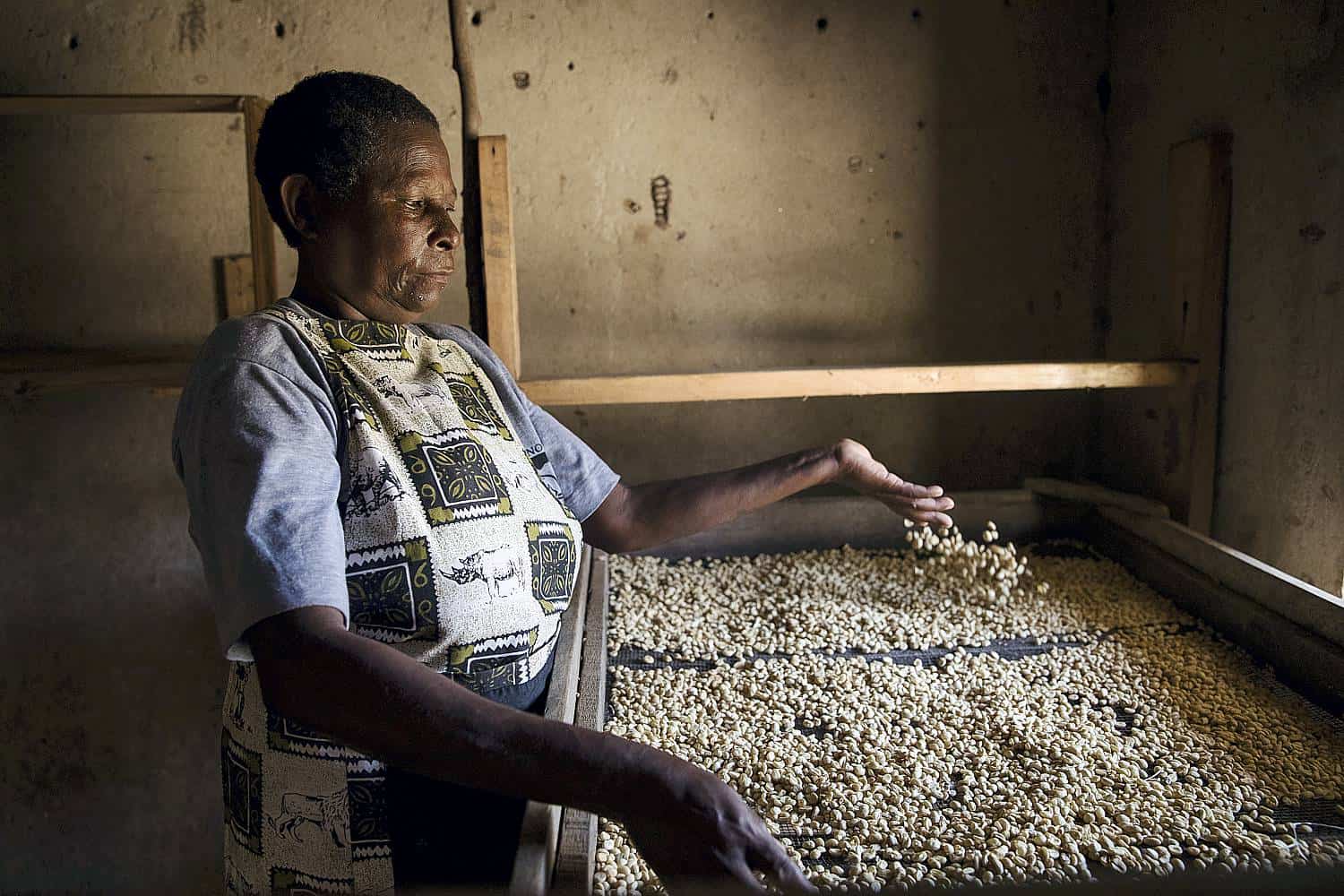 |
7. Experiential Wildlife Research Tours In Queen Elizabeth
Key Takeaways
- Experiential activity in the company of researchers as they conduct habituation processes
- Developing an in-depth understanding of animal behavior, migratory paths, and habitats
- Studying how the ecosystem of the biomes function with each creature playing its part
- Each expedition lasting between 1 and 3 hours with only a limited number of guests permitted
- Excursions include taking hippo census, bird countings, and tracking lions and mongoose
Some of the experiential tourism activities you can participate in at Queen Elizabeth Park include bird counts, a hippo census, lion tracking, and mongoose tracking. Each expedition lasts for between 1 and 3 hours and accepts a limited number of guests, which minimizes the possibility of disturbing the animals and ensures that visitors enjoy their excursion. With the assistance of the tour consultant at AfricanMecca Safaris, you can book this activity for the early morning or the evening.
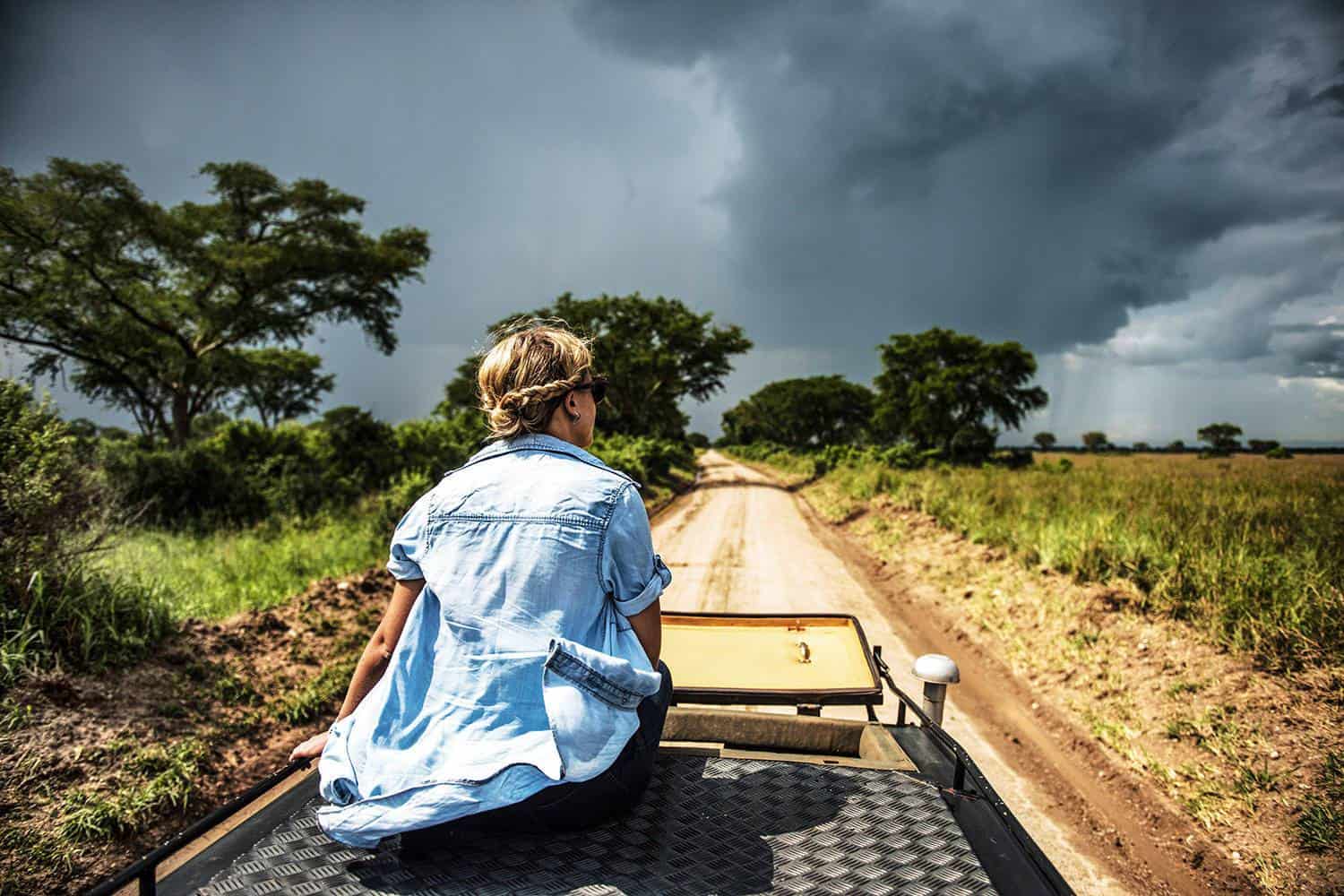 |
8. Nature Walks, Scenic Hikes & Primate Treks In Queen Elizabeth
Key Takeaways
- Nature walks in different locations such as the Mweya Peninsula enjoying vistas of the Kazinga Channel, grasslands, and Lake Edward that abound with a rich diversity of avian life
- Following the edges of the Ishasha River for sightings of hippos in the water
- Trekking in the rainforests of Maramagambo, Kalinzu and Kyambura Gorge to spot some of the 10 species of primates and a host of colorful birds with an occasional leopard in a tree
- Traveling out to Lake Kyasanduka and Lake Nyamasingiri, which is a haven for birdwatchers
Trekking in the rainforests of Maramagambo, Kalinzu and Kyambura Gorge, in Queen Elizabeth Park, can introduce you to some of the 10 species of primates that thrive here, including the chimpanzee, black and white colobus monkey, vervet monkey, red-tailed monkey, blue monkey, and the elusive L’Hoest monkey. You may also spot a leopard hidden in a tree, along with a host of forest birds like the sunbird, woodpecker, greenbul, and various others. Other interesting locales to hike or trek in in Uganda are around Lake Kyasanduka and and Lake Nyamasingiri, a delightful mecca for birdwatchers, where you can look for avian life like the chestnut wattle eye, Scaly-breasted illadopsis, and snowy-headed robin-chat.
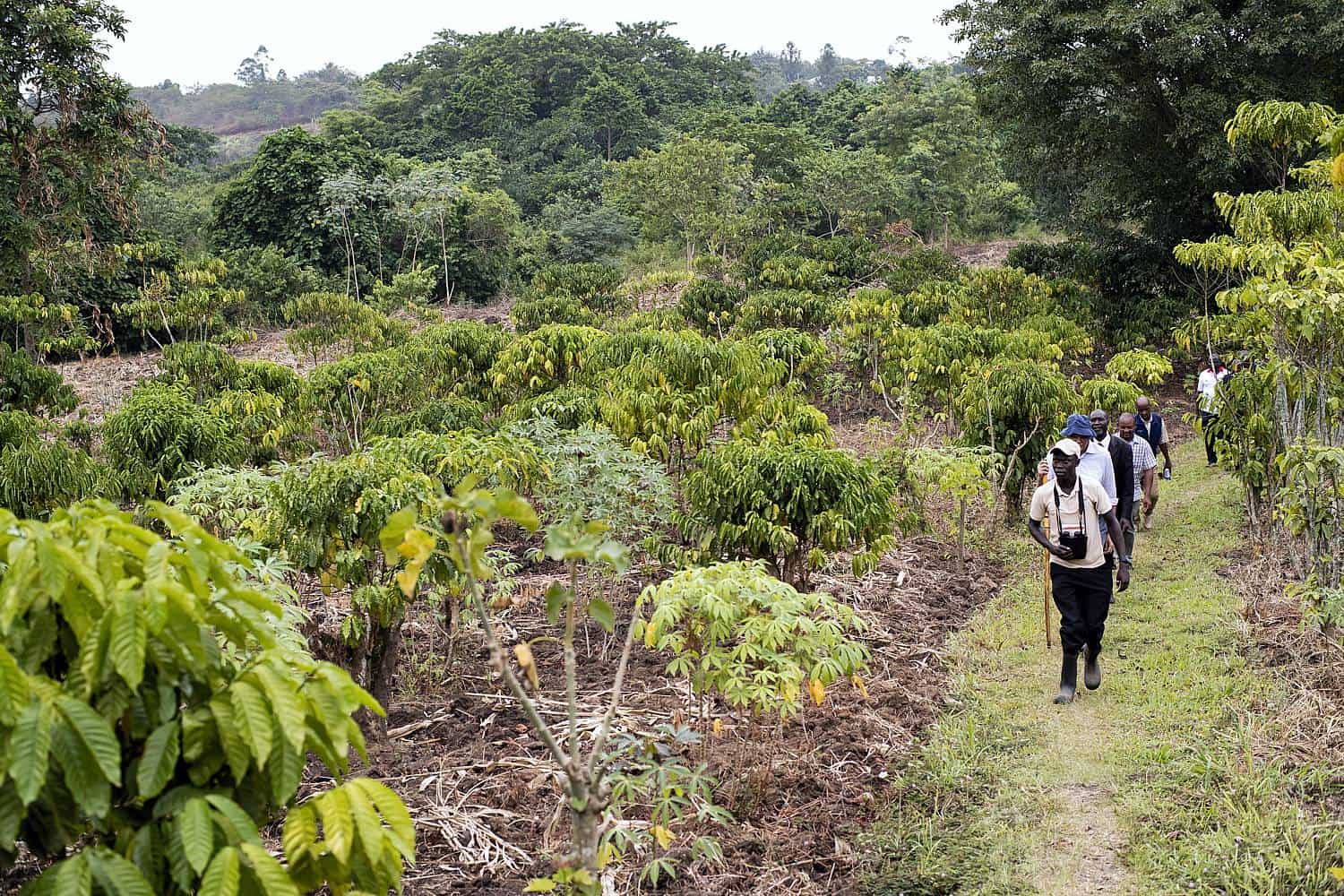 |
9. Experience The Tree-Climbing Lions Of Ishasha
Key Takeaways
- Located on the southern section of the park and known for unusual tree-climbing lions
- This excursion is best combined with a tour of the Bwindi Impenetrable National Park
- Abounding with a host of grazers like herds of Ugandan kob and waterbuck
 |
Select Our Highly Recommended & Unique Designed Uganda Safaris & Gorilla Treks That You Want To Tour Visit & Experience
|
Queen Elizabeth Park Rating By AfricanMecca
4
Star
Wildlife Exclusivity Activities Accommodations Authenticity
Users
(0 votes)
0
|
Learn More On AfricanMecca Safari Tier Ratings & Experiences |
Write A Trip Review On Queen Elizabeth In Uganda
Read More +
WHERE & BEST PLACES TO STAY IN QUEEN ELIZABETH
Queen Elizabeth has varied accommodations, from the luxuries of Kyambura Gorge Lodge to the deluxe option of Ishasha Wilderness Camp. The value lodge options are Katara, Elephant Plains Lodge and Mweya.
Read More +
QUEEN ELIZABETH SAFARI ACTIVITIES & TOUR ATTRACTIONS
Experience safari game drives in the vast savannah of the Kasenyi plains and Ishasha sector to trekking wild chimpanzee on foot in Kyambura Gorge. Birders can go on a boat excursions on Kazinga Channel.
Read More +
BEST TIME TO VISIT QUEEN ELIZABETH
Like most locations in Africa, Queen Elizabeth National Park has two wet rainy seasons and two dry seasons. June, July and August is the best time to visit Queen Elizabeth National Park in western Uganda.
AFRICANMECCA REVIEWS
What are our Customers saying about us? READ MORE REVIEWS
AfricanMecca Safaris offers incredibly knowledgeable and skilled services! Our travel arrangements for 2 months of volunteering with TEACH Rwanda in country were made quickly and economically. Honored to work with Raza!
Janet Brown - TEACH Rwanda Founder - United States
I just returned from a month in Africa, specifically Rwanda & Kenya. I am left breathless with my experience. AfricanMecca Safaris coordinated the entire trip for me and left no detail, nothing for me to do.
Carol Bobb - Pennsylvania, United States
AfricanMecca Safaris created a remarkable honeymoon tailored to our interests and desires. The quality of service and delivery of experience was unsurpassed. I highly recommend AfricanMecca Safaris to honeymooners, families, or any traveler.
Noorin & Jason Nelson - Maryland, United States
I booked my safari holiday through AfricanMecca. They were the most helpful company I have ever dealt with and I work within the travel industry. I had the most amazing time. The holiday went as clockwork with no hitches anywhere.
Shelley Roberts - Hemel Hempstead, United Kingdom
This is to let you know my guests, The Bryant's, had a wonderful time on the trip Samburu, Masai Mara/Kenya, Chobe/Botswana & Victoria Falls/Zambia. Everything was perfect! Thank you.
Christine Milan - MT Carmel Travel - Connecticut, United States
We have returned from our African adventure and would like to thank you very much for your part in making this such a wonderful experience. We were lucky enough to time the Great Migration from the Serengeti, which was amazing.
Denise Paterson - Belmont, Australia
Rwanda was amazing. The accommodations, food, and guides AfricanMecca arranged were great. Raza also helped us through the complicated process of getting permits for gorilla trekking. AfricanMecca is a fantastic company to work with.
Stephanie Weir - United States
EAST AFRICA SAFARI BOOKING TRIP IDEA FOR QUEEN ELIZABETH IN UGANDA
When visiting Queen Elizabeth for your wildlife safari, we recommend combining it with Bwindi Park for your gorilla safari trek, Murchison Falls, and Kibale (chimpanzee safari) alongside your city tour visits of Kampala and Entebbe.
You may optionally extend out to other wilderness areas such as Mgahinga to track down golden monkeys and gorillas in the same park, Jinja for whitewater rafting on the Nile River, and Semliki, Lake Mburo or Kidepo for an offbeat wildlife tour.
You can end your vacation on the beach at Lake Victoria or even extending out to the exotic spice island of Zanzibar or Lamu, or even Mombasa.
Best Safari Planning Ideas & Trip Experiences For Uganda
Below are guide references on how to plan each of the below safari experience in Uganda. Alternatively, go to the summary section for a quick overview of each trip planning experience.1. How To Plan Uganda Safari Trips? (Summary)
2. Wildlife Safari Trip Planning Guide For Uganda
3. Private & Tailor-Made Safaris Trip Planning Guide For Uganda
4. Honeymoon Safaris Trip Planning Guide For Uganda
5. Family Safaris Trip Planning Guide For Uganda
6. Luxury Safaris Trip Planning Guide For Uganda
7. Photo Safaris Trip Planning Guide For Uganda
8. Cultural Safaris Trip Planning Guide For Uganda
9. Gorilla, Chimpanzee & Primate Safaris Trip Planning Guide For Uganda
10. Hike, Trek & Bush Walk Safaris Trip Planning Guide For Uganda
11. Birding Safaris Trip Planning Guide For Uganda
12. Wedding Safaris Trip Planning Guide For Uganda
READ MOREKickstart Your Safari Planning
ARE YOU PLANNING TO BOOK AN AFRICAN SAFARI TO QUEEN ELIZABETH IN UGANDA?
Do You Need Knowledgeable, Experienced & Specialist Guidance For Your Travels In Queen Elizabeth ? Let Us Help Plan Your Trip Itinerary Correctly
CONTACT AN AFRICA TRAVEL EXPERT ON QUEEN ELIZABETH NATIONAL PARKEXPLORE MORE ON QUEEN ELIZABETH NATIONAL PARK IN UGANDA
HAVE YOU VISITED QUEEN ELIZABETH FOR AN AFRICA SAFARI IN UGANDA?
Write A Travel Or Tourist Trip Review To Share Your Experiences
WRITE QUEEN ELIZABETH REVIEWAMS BLOG
VIEW ALL -- 24 December 2024 by AfricanMecca Safaris, in Blog For AfricanMecca Safaris,Safari Planning Blog Posts - AfricanMecca Safaris
What AfricanMecca Accomplished In 2024
What AfricanMecca Accomplished In 2024 Published By AfricanMecca Safaris | Blog ...READ MORE + - 26 October 2017 by AfricanMecca Safaris, in Blog For AfricanMecca Safaris,Safari Planning Blog Posts - AfricanMecca Safaris
Baggage Guidance, Flight Shuttle Service & Restrictions On Flying Safaris In Africa
Baggage Guidance, Flight Shuttle Service & Restrictions On Flying Safaris In...READ MORE + - 07 June 2017 by AfricanMecca Safaris, in Blog For AfricanMecca Safaris,Latest Kenya Blog Posts From AfricanMecca Safaris,Safari Planning Blog Posts - AfricanMecca Safaris
Masai Mara Horseback Riding Safari In Kenya With AfricanMecca
Masai Mara Horseback Riding Safari In Kenya Published By AfricanMecca Safaris | ...READ MORE +

